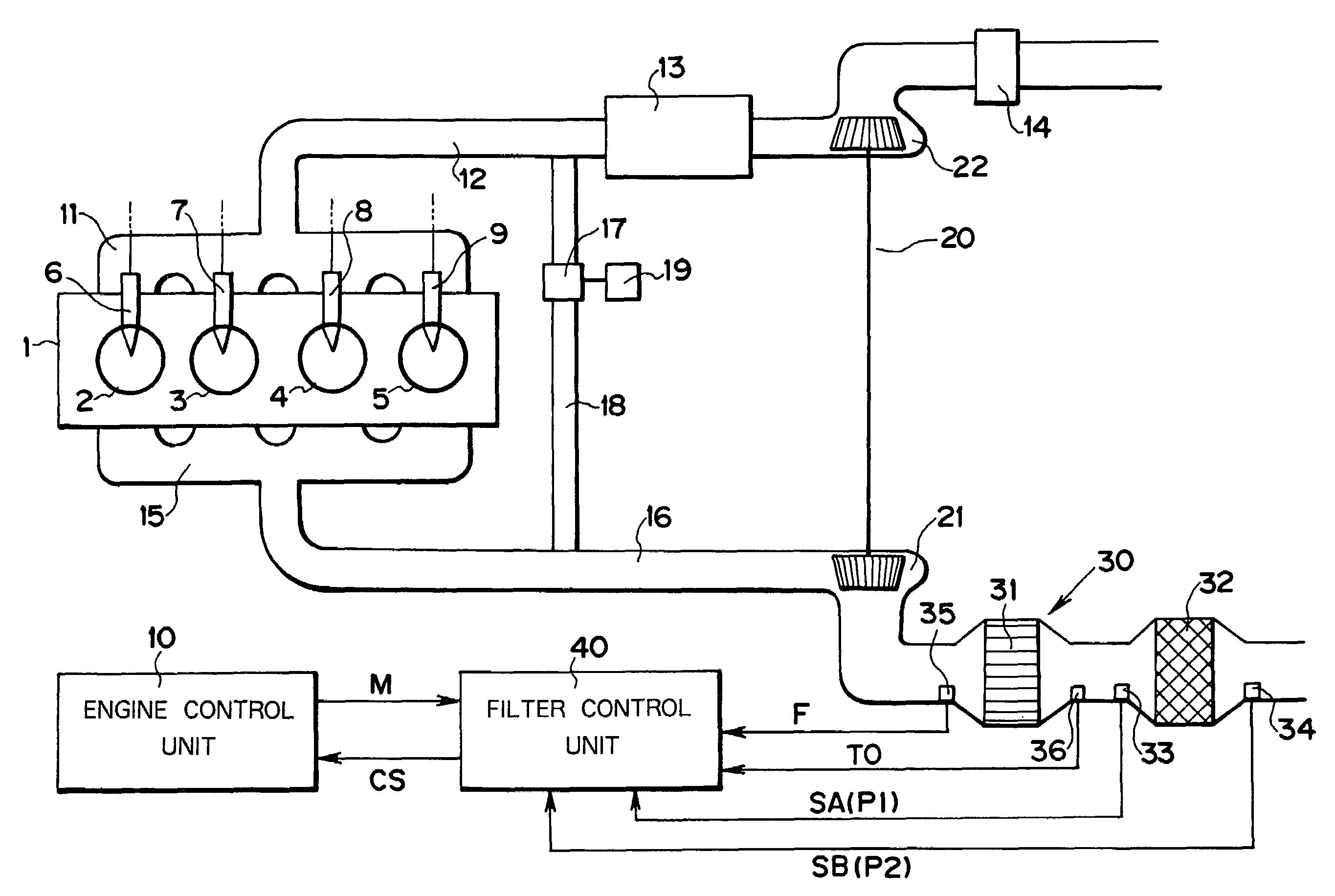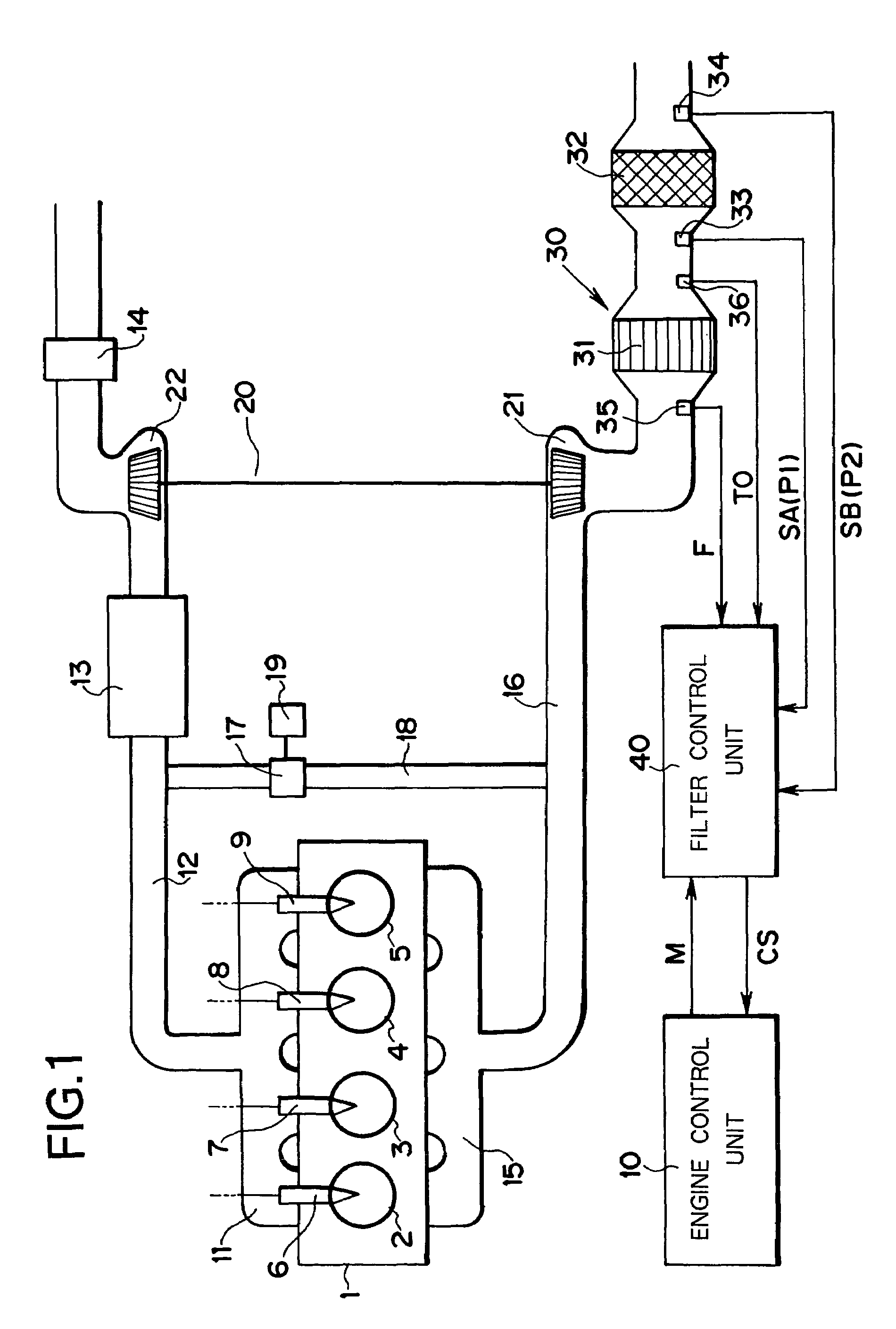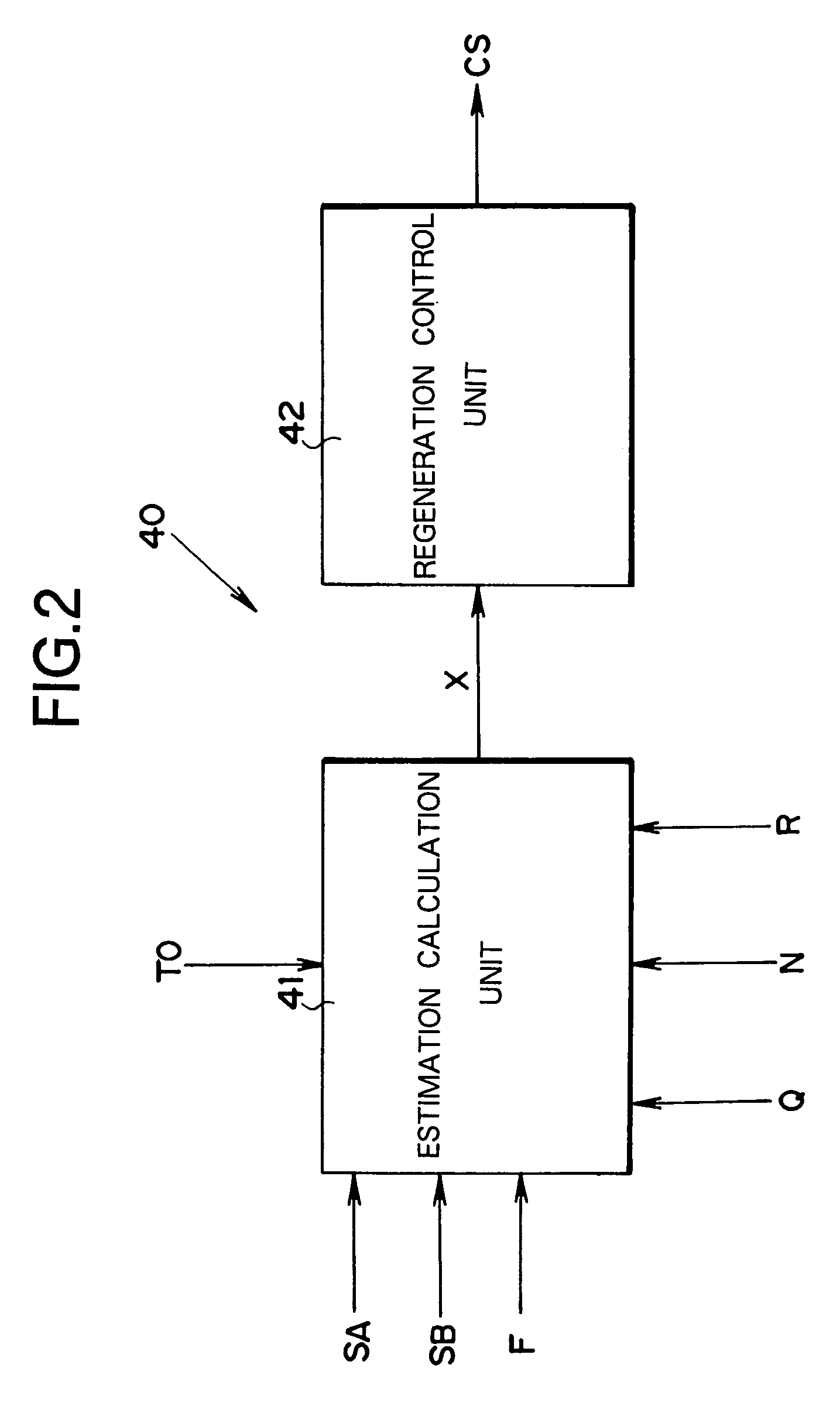Filter control apparatus
a filter control and filter technology, applied in combination devices, machines/engines, chemical/physical processes, etc., can solve the problems of reducing the precision of pressure information possessed by the pressure sensor output signal, difficult to estimate accurately the quantity of accumulated particulates on the basis of the before and after, and difficulty in passing exhaust gas through the exhaust gas passage. achieve the effect of more accuracy and high precision
- Summary
- Abstract
- Description
- Claims
- Application Information
AI Technical Summary
Benefits of technology
Problems solved by technology
Method used
Image
Examples
Embodiment Construction
[0024]In order to explain the present invention in greater detail, it will now be described with reference to the attached drawings.
[0025]FIG. 1 is an overall schematic diagram of an example of an embodiment of the present invention showing a case in which filter control is applied to after-treatment of the exhaust gas of a diesel engine. Symbol 1 denotes a four-cylinder diesel engine, the cylinders 2-5 of which are provided with injectors 6-9, respectively. The operation of these injectors 6-9 is controlled by an engine control unit 10, using a known arrangement to inject a required amount of high-pressure fuel, at a required timing, into the corresponding cylinder.
[0026]An intake duct 12 connected to an intake manifold 11 is provided with an inter-cooler 13 and an air cleaner 14. An exhaust duct 16 connected to an exhaust manifold 15 is provided with an exhaust gas after-treatment apparatus 30.
[0027]An exhaust recirculation channel 18 provided with an EGR control valve 17 is provi...
PUM
| Property | Measurement | Unit |
|---|---|---|
| exhaust-gas differential pressure | aaaaa | aaaaa |
| temperature | aaaaa | aaaaa |
| time | aaaaa | aaaaa |
Abstract
Description
Claims
Application Information
 Login to View More
Login to View More - R&D
- Intellectual Property
- Life Sciences
- Materials
- Tech Scout
- Unparalleled Data Quality
- Higher Quality Content
- 60% Fewer Hallucinations
Browse by: Latest US Patents, China's latest patents, Technical Efficacy Thesaurus, Application Domain, Technology Topic, Popular Technical Reports.
© 2025 PatSnap. All rights reserved.Legal|Privacy policy|Modern Slavery Act Transparency Statement|Sitemap|About US| Contact US: help@patsnap.com



